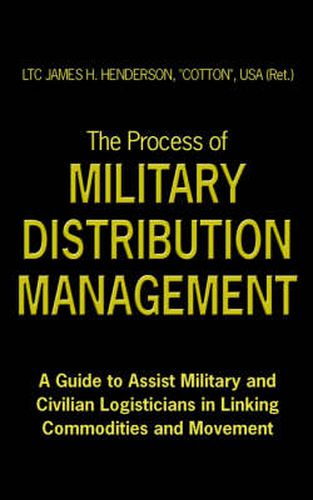Readings Newsletter
Become a Readings Member to make your shopping experience even easier.
Sign in or sign up for free!
You’re not far away from qualifying for FREE standard shipping within Australia
You’ve qualified for FREE standard shipping within Australia
The cart is loading…






This title is printed to order. This book may have been self-published. If so, we cannot guarantee the quality of the content. In the main most books will have gone through the editing process however some may not. We therefore suggest that you be aware of this before ordering this book. If in doubt check either the author or publisher’s details as we are unable to accept any returns unless they are faulty. Please contact us if you have any questions.
This book is a guide for Logistician’s (military or civilian) in the execution of Movement Control and Distribution Management. - Provides examples of procedures and guidance utilized by our armed forces operating in Iraq to date, as well as being reviewed as emerging doctrine for the future. - Presents information for staff management that incorporates manual and automated procedures to monitor and track movement and commodities on today’s modern battlefields. - Provides a process to utilize data from different automation systems, which do not talk to one another, as well as incorporates manual procedures to develop a system to monitor and track movement and commodities on today’s modern battlefields. By doing this, we have provided the commander with a focused staff battle rhythm that works. Due to the Army Transformation and Spiral Development, there is a lack of documentation on just how to interpret and implement the new concepts and automation applications, and synchronize their usage and development. Many of the ideas and process in this book have not advanced beyond the conjectural level.The work covered is an initial effort to make operational these new ideas and procedures and provide them as training in a classroom and wartime environment. The uniqueness of the logistical mission and the technology of these services, this book may be guided towards a rather select audience. But due to the tactics and methods being used by our enemies in the field, it is important to understand that at all levels, the ability to have visibility and command and control of movement within our battle space is essential.
$9.00 standard shipping within Australia
FREE standard shipping within Australia for orders over $100.00
Express & International shipping calculated at checkout
This title is printed to order. This book may have been self-published. If so, we cannot guarantee the quality of the content. In the main most books will have gone through the editing process however some may not. We therefore suggest that you be aware of this before ordering this book. If in doubt check either the author or publisher’s details as we are unable to accept any returns unless they are faulty. Please contact us if you have any questions.
This book is a guide for Logistician’s (military or civilian) in the execution of Movement Control and Distribution Management. - Provides examples of procedures and guidance utilized by our armed forces operating in Iraq to date, as well as being reviewed as emerging doctrine for the future. - Presents information for staff management that incorporates manual and automated procedures to monitor and track movement and commodities on today’s modern battlefields. - Provides a process to utilize data from different automation systems, which do not talk to one another, as well as incorporates manual procedures to develop a system to monitor and track movement and commodities on today’s modern battlefields. By doing this, we have provided the commander with a focused staff battle rhythm that works. Due to the Army Transformation and Spiral Development, there is a lack of documentation on just how to interpret and implement the new concepts and automation applications, and synchronize their usage and development. Many of the ideas and process in this book have not advanced beyond the conjectural level.The work covered is an initial effort to make operational these new ideas and procedures and provide them as training in a classroom and wartime environment. The uniqueness of the logistical mission and the technology of these services, this book may be guided towards a rather select audience. But due to the tactics and methods being used by our enemies in the field, it is important to understand that at all levels, the ability to have visibility and command and control of movement within our battle space is essential.